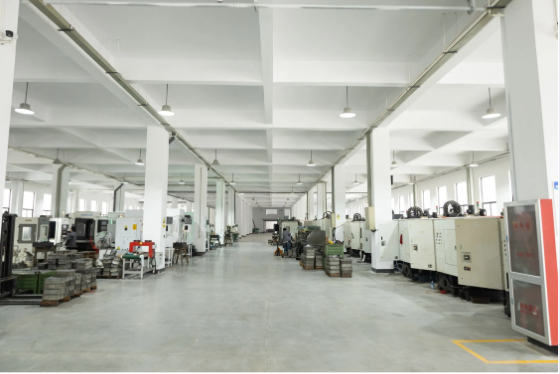The Role of Linear Guides in Modern Manufacturing

The Role of Linear Guides in Modern Manufacturing
In the fast-paced world of modern manufacturing, precision is no longer just an advantage—it has become the foundation of success. Every industry, from automotive to aerospace, demands components and machines that deliver flawless accuracy, extended service life, and reliable performance under constant use. At the center of this pursuit for perfection lies the linear guide, a seemingly simple yet indispensable component that powers the efficiency and stability of today’s most advanced systems.
Why Linear Guides Matter
Linear guides are designed to support and move loads smoothly along a predefined path, reducing friction and ensuring controlled motion. Unlike traditional sliding mechanisms, high-quality linear motion products provide consistent accuracy while withstanding heavy-duty cycles. Whether in automated assembly lines, CNC machining centers, or semiconductor fabrication equipment, linear guides are the unsung heroes that ensure operations run without interruption.
One of the greatest advantages of linear guides is their ability to minimize wear and energy loss. By allowing machines to operate with less resistance, they not only extend the service life of critical components but also reduce maintenance costs—a vital factor in high-output environments where downtime directly translates into financial loss.
From Conventional Manufacturing to Industry 4.0
The rise of Industry 4.0 has transformed how manufacturers think about production. Smart factories, powered by automation and interconnected devices, require machines to operate at levels of precision previously thought impossible. Sensors, robotics, and AI-driven systems rely on the accuracy of linear motion to execute delicate tasks. For instance, in semiconductor plants, wafers must be positioned with nanometer accuracy; in the medical industry, imaging devices demand smooth, vibration-free movement. Without linear guides, these technologies would struggle to deliver the consistency that Industry 4.0 promises.
This is where companies like Yinhe Transmission play an essential role. By providing advanced linear motion solutions, Yinhe Transmission ensures that manufacturers across multiple sectors can achieve the reliability and precision that smart factories demand.
Comparing Linear Motion Technologies
Different applications require different motion solutions. Ball guides, for instance, are excellent for high-speed movement with moderate loads, while cross-roller guides are designed for scenarios that require exceptional rigidity and high load-bearing capacity. Cross-roller guides use cylindrical rollers arranged at right angles, distributing weight evenly and reducing deflection. This makes them the preferred choice for industries like aerospace, robotics, and metrology, where even the smallest deviation can result in costly errors.
Moreover, advancements in material science have made today’s linear guides more durable than ever. Specialized surface treatments, improved lubrication systems, and high-strength alloys ensure performance under extreme conditions. Manufacturers who invest in these technologies gain not only efficiency but also peace of mind.
Practical Applications Across Industries
Linear guides are not limited to one specific sector. In automotive production, they enable robotic arms to assemble components with incredible speed and accuracy. In aerospace, they ensure the safe handling of delicate structures. In consumer electronics, they play a role in the precise assembly of devices used by millions worldwide. Even in laboratories and healthcare facilities, linear motion systems are critical for diagnostic and surgical equipment.
By ensuring repeatable accuracy, linear guides allow industries to innovate without compromise. They provide the foundation on which automation, robotics, and high-tech equipment can thrive.
Looking Ahead
As sustainability becomes a global priority, manufacturers must also consider energy efficiency. Linear motion products that reduce resistance and extend machine life contribute directly to greener, more sustainable production. By lowering power consumption and reducing waste from breakdowns, these systems align perfectly with global goals for carbon neutrality.
The demand for high-performance linear guides will only grow as industries continue to embrace automation and digital transformation. Those who adopt advanced motion solutions today will find themselves at a significant advantage tomorrow.
Conclusion
Linear guides may not always be the most visible part of modern machinery, but their impact is undeniable. They provide the precision, durability, and reliability that every industry now depends on. By working with trusted providers like Yinhe Transmission, manufacturers can be confident that their operations are supported by cutting-edge motion technology designed for the future.
- Art
- Causes
- Crafts
- Dance
- Drinks
- Film
- Fitness
- Food
- Jeux
- Gardening
- Health
- Domicile
- Literature
- Music
- Networking
- Autre
- Party
- Religion
- Shopping
- Sports
- Theater
- Wellness



